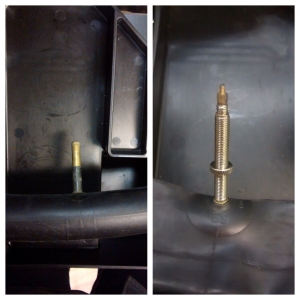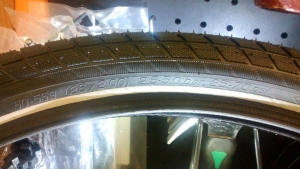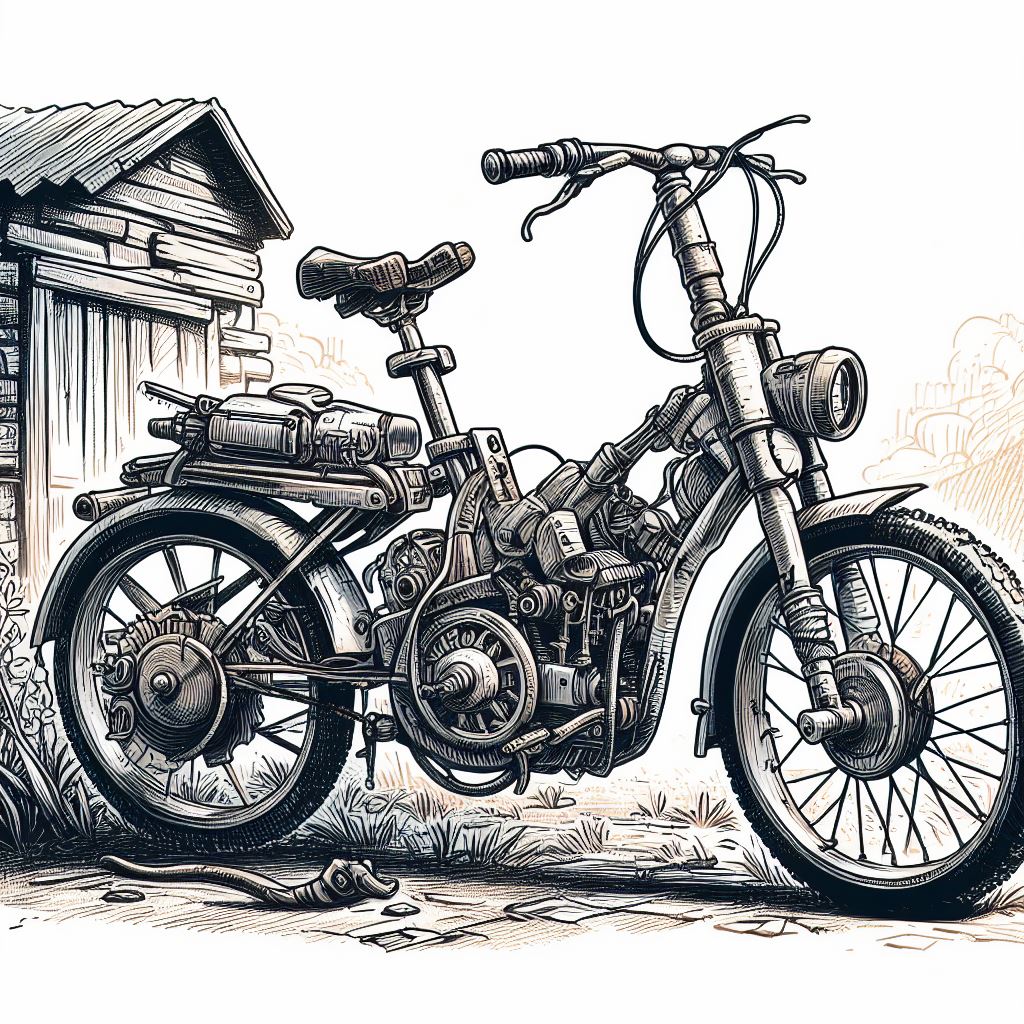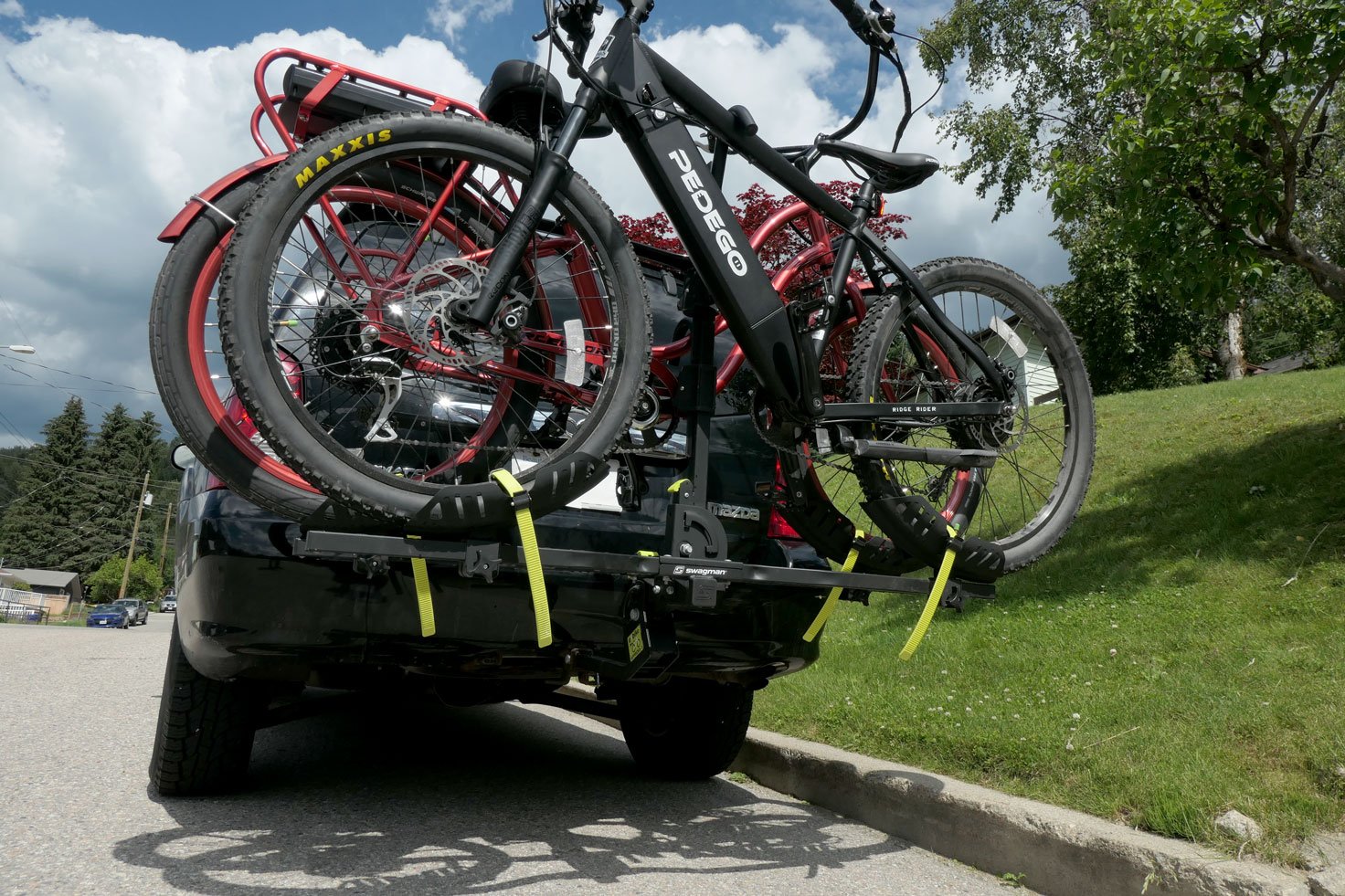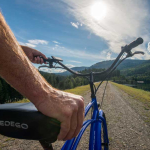Taking Care Of Tires
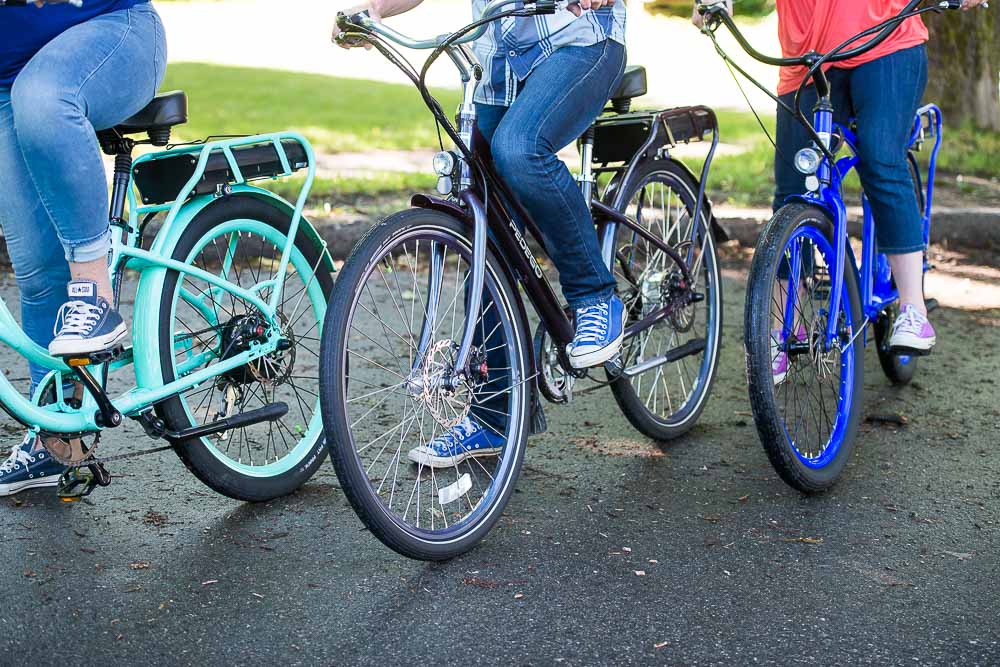
Unless you get a flat, it can be pretty easy to forget about the bike tires spinning beneath your Pedego. However, consciously thinking about and maintaining those little wheels of rubber not only make your ride smoother and keep you safe, but it can also prolong the life of your entire bike.
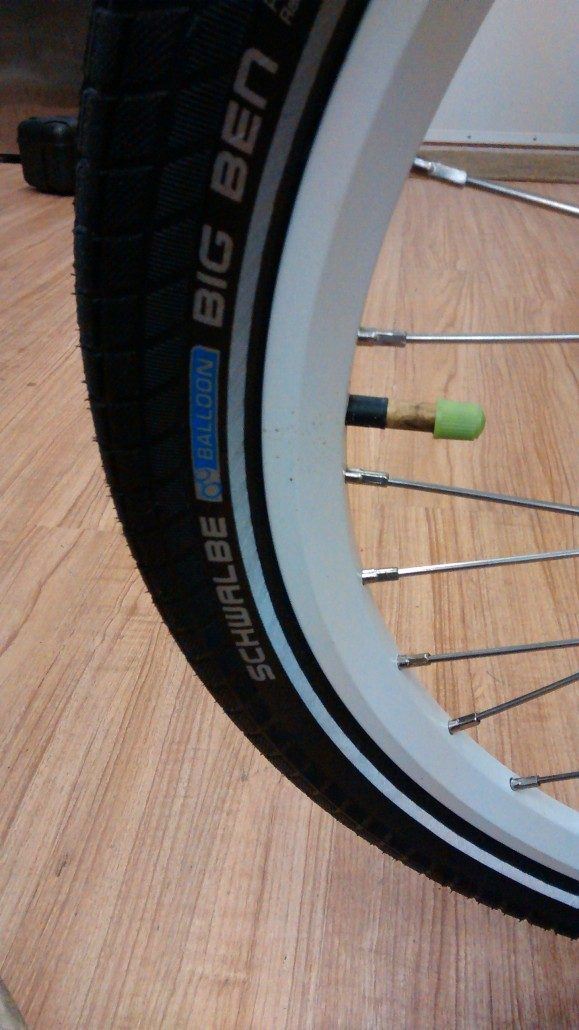
Side view of a Pedego wheel. The black rubber tire, which has a thin reflective stripe on it, is seated into the wheel’s while metal rim. While you can’t see the inflatable inner tube, you can see its green-capped valve poking out on the other side of the rim. It’s green because the tire contains green ‘slime’, which will automatically fill tiny holes in the tire.
An anatomy lesson
A bicycle tire, like that of a car, consists of two parts. First, there is the tough rubber outer layer that makes contact with the road. This is the actual “tire” and it sits inside the rim of your bike. Inside of the tire is an inflatable tube, which is filled with air through a valve that pokes through a hole in the rim. There are two types of valves available on bike tubes: the thicker Schrader valve and the thinner Presta valve. The former, which can be filled with any standard air pump, is more common on Pedego bikes.
Under pressure
Every bike tire has an ideal air pressure based on its size and the activity (i.e. city cycling, trail riding, etc.) it is designed for. This specification is embossed into the side of the tire, and is typically given in psi, bar, and/or kPa measurements. Most tires will suggest a range of air pressure so you can decide if you’d like a softer or firmer tire. A softer tire—that is, one with less air—puts more rubber on the ground and thus offers more stability and grip on wet roads or loose gravel. It also acts as a shock absorber on rough surfaces. Fuller tires, however, offer more speed and quicker turning as there is less rubber—and thus less friction—on the road. However, it’s important not to go outside the air pressures specified on the side of your tire. Since the air pressure inside of a bicycle tire can fluctuate with exterior temperatures, an over-inflated inner tube could explode on a hot day and an under-inflated tube could go flat on a cold day. This is why it’s also important to keep your tires adequately inflated if your bicycle is resting in storage for longer periods of time. On a similar note, allowing bike tires to remain under-inflated bike can damage the rest of your wheel. It’s possible for spokes to come loose and rattle, possibly weakening the structure of the wheel. Also, it is possible for the rims to crack if the air pressure is so low that the wheel rims end up touching the ground. If you’re unsure of how much you’d like to inflate your inner tube, it’s good to start at about 10 psi below the highest specified pressure. For example, 60 psi is for a tire that is rated for 35 – 70 psi.
As the embossed information states, this bicycle tire is rated for an air pressure of 2.5 – 5 bar, or 35 – 70 psi. The ideal pressure, however, would be around 60 psi.
Flats
Flat tires happen to the best of us from time to time. If you do get one, do not ride your bike as this could damage your wheel. Instead, walk your bike home, have someone pick you up or fix the flat right away if you know how.
Hit the road running with properly maintained tires to improve safety and the quality of your ride!

